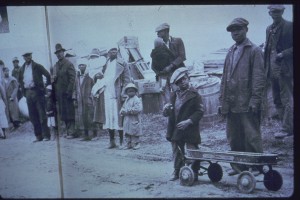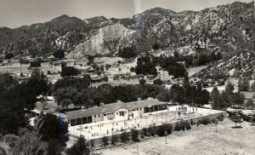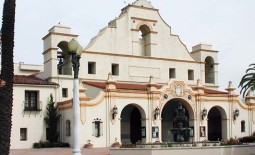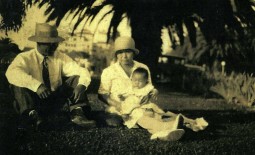The Great Migration to Los Angeles
On this Martin Luther King Jr. national holiday, it is important to remember that Los Angeles played a significant role in the saga of the African American struggle for civil rights. Los Angeles became a haven for African American families looking for refuge from the ugliness and terror aimed at them in the post-Civil War South. As Southern white supremacists back lashed against the humane policies and laws granting equality, property rights and civil rights to African Americans – a process begun with President Abraham Lincoln and continuing for a brief time after his assassination by a pro-Confederacy actor – Southern states’ legislatures became controlled by racist whites. “Jim Crow” laws were passed that increasingly re-imposed discrimination, segregation and political dis-empowerment upon Blacks. The Ku Klux Klan and other white supremacist groups took hold, burning down Black churches, homes and businesses; the practice of lynching Blacks, even children, became widespread; an overwhelming atmosphere of terror and suppression was perpetrated against Blacks. Poll taxes and other means were imposed to deprive Blacks of participation in all aspects of civic life.
As job opportunities opened up for Blacks in Chicago, many went north to that city. But another vital escape route for Blacks was opened up when transcontinental train service was built to the West, particularly Los Angeles. The trains from New Orleans to Los Angeles were a means out of the South and a path to refuge and opportunity for hundreds of thousands of African Americans. By the early teens of the 20th Century, the “Great Migration” of African Americans began in earnest. Los Angeles became as much a paradise for them, as it was for the millions of white Americans who migrated to this city. In Los Angeles, while remaining a racially segregated city for much of the 20th century, Blacks experienced less overt discrimination and the city was not dominated by white supremacist organizations as in the South. The young, booming west coast city was not mired in the rigid traditions and ugly history of slavery, as in the South. People were coming to Los Angeles from all parts of the nation and the world; it was a place where increasingly people of differing ethnicities and cultures had to learn to adjust to and tolerate each other, like it or not. Most importantly, there were good-paying jobs to be found in Los Angeles’ massive manufacturing industries. While there were many significant problems for Blacks in Los Angeles borne out of persistent racism and discrimination against LA’s ethnic minorities, a good life could still be built for Black families, such as in South Central Los Angeles, which for much of the 20th century was a safe, pleasant multi-ethnic working class region offering a middle class lifestyle. The Civil Rights movement led by Reverend King in the 1950s and 60s, threw sharp focus on the remaining and significant obstacles to complete equality and empowerment for Blacks in Los Angeles, as everywhere in the United States. Great gains were made. But despite these vital achievements, in the last decades of the 20th century Los Angeles was the scene of some of the worst cases of police and civic abuse of Black citizens (and other ethnicities) in the nation, resulting in the infamous Los Angeles Riots or Los Angeles Insurrection of 1992 – the worst outbreak of civilian rebellion, violence and property destruction in the nation’s history since the Civil War.
As long as there are dominant ethnic populations and smaller minority populations within Los Angeles and within our nation, the vital work of protecting the civil and human rights of all our citizens and residents must continue. That is one important lesson to be remembered on this important national holiday.
Sharecroppers in Segregationist South





Black people make tamales? | blaxicana.com
June 23, 2012 @ 9:17 pm
[…] did diffuse beyond the Mississippi Delta. The hot tamales traveled with African-Americans to California, Chicago, and other cities beyond the South via the Great […]